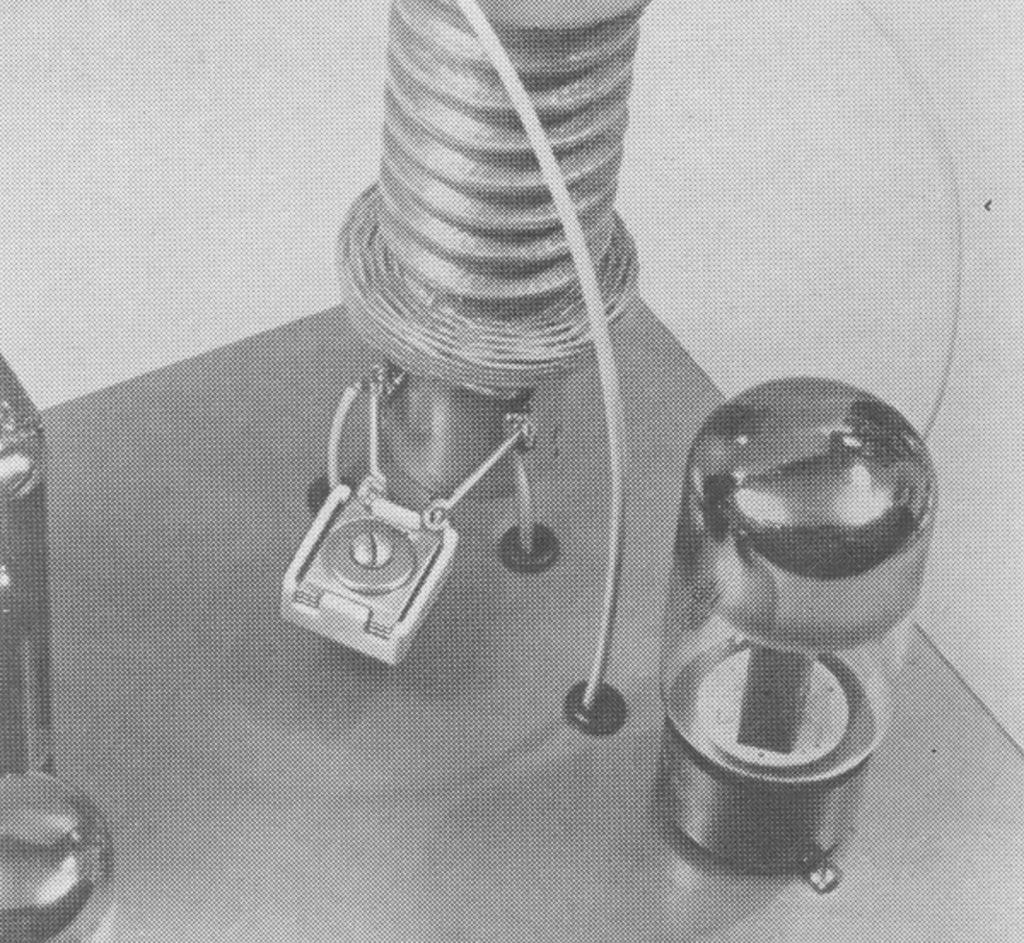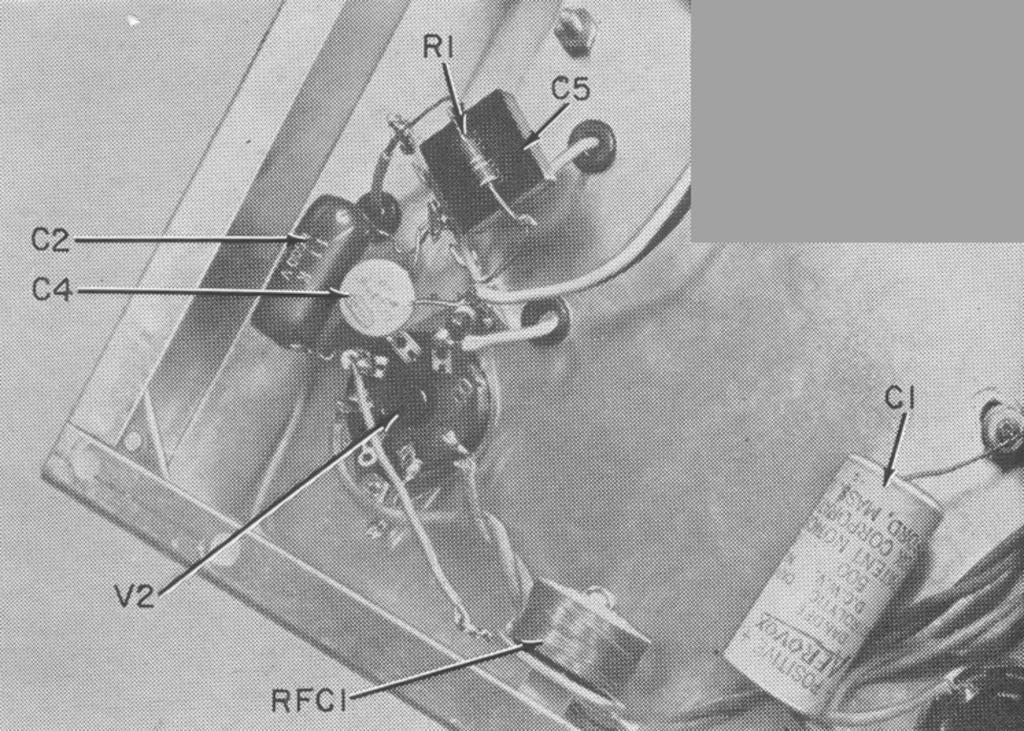TCBA Volume 7 - Issue 1
Page 9 of 18
Construction. The mechanical layout is not critical, and the design shown in the photographs need not be followed exactly. It is convenient to place the r.f. coil off in one corner of the chassis and to drop the connecting leads to V2 through grommeted holes in the chassis deck. The high-voltage output lead of the coil is shortened and a sewing needle soldered to the end to show “point discharge” effects.
The power supply is of conventional design and the B-plus applied to the plate of V2 can range from 250 to 500 volts. However, 250 - 350 volts is more than ample for an output of between 12,000 and 15,000 volts. The output will also vary according to the type of tube used at V2. When you open the coil box, you will see that a 6Y6 is recommended by the manufacturer. However, noticeably improved effects were obtained by the author by substituting a 6L6. A 6V6 or another equivalent power pentode would do in a pinch.
Capacitor C3 is used to tune the primary of the h.v. coil. For convenience, two bus-bar leads about 1" in length were soldered to the capacitor and used to support it in mid-air. The remaining components are scattered around below the chassis deck.
Firing Up Li'l TC. When used in a TV receiver, the high voltage generated by this coil/oscillator arrangement is rectified and filtered. It is then considerably more dangerous than the unfiltered r.f. generated by Li'l TC. Nevertheless, Li'l TC should be treated with respect, for the voltage can puncture the skin of a finger, although high-frequency voltages usually tend to flow relatively harmlessly along the skin's surface.


